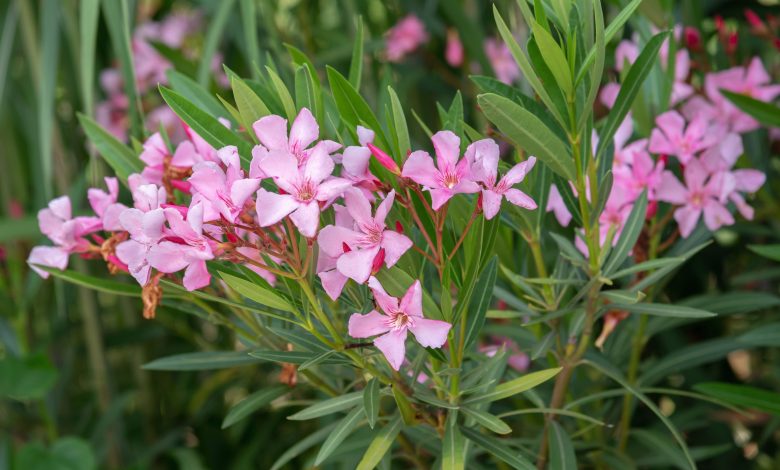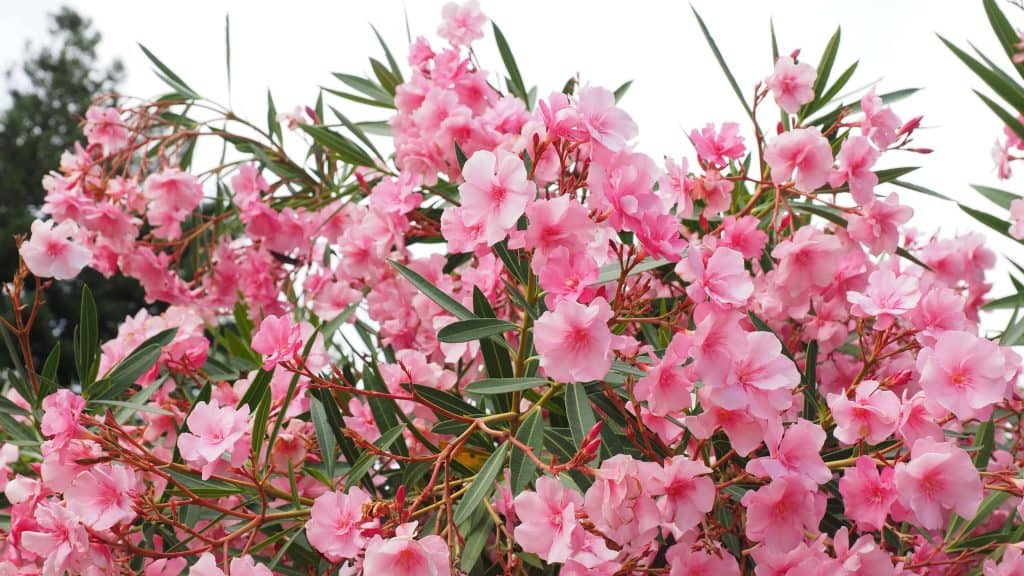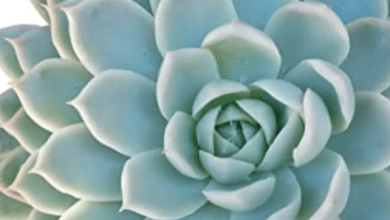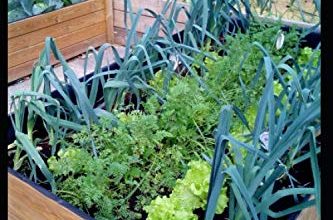How to Plant Oleanders in your Garden: [Step by Step + Complete Guide]

Oleander (scientific name Nerium oleander)It is a bush with beautiful flowers that can reach a height of up to 6 meters.
Its dense foliage remains green throughout the year and is capable of withstanding very low temperatures.
It is a fast-growing tree, belonging to the evergreen species, whose dense foliage remains green throughout the year and its giant flowers of various colors such as pink, white, yellow or red also remain alive in any season.
It is seen practically everywhere, from the shores of the Mediterranean Sea to the fabled lands of China.
It grows very easily in the dry Mediterranean riverbeds, even in periods of great drought. It can be seen in ravines and streams, which are very dry in summer.
It is also known by the names of Trinitaria, Laurel de Flor, Baladre or Rosa Laurel.
It reproduces quickly through the technique of cuttings, whose ideal time for cultivation is spring and summer.
Important Points when Planting Oleanders
- When to sow? The Oleander is planted between October and April.

- Where to do it? It can really fit into any environment.
- How to prepare the land? They require nutrient-enriched, well-drained
- How do we water? On land, it is enough to water it every 4 or 5 days and in a pot with great abundance, but without flooding and daily.
- How do we sow step by step? The best way is by the cutting technique, in order to achieve rapid multiplication.
- What pests and diseases does it have? It can suffer fungal necrosis and attacks by aphids, cochineal, canker, scabies or ascoquita, among other evils.
When to plant oleanders?
 Prefers temperate climatesand has even reached the United States, Argentina, Uruguay, Colombia, Venezuela and Panama.
Prefers temperate climatesand has even reached the United States, Argentina, Uruguay, Colombia, Venezuela and Panama.
The Oleander is planted between October and April, that is, from autumn to spring, but experts recommend waiting until April to obtain superior results.
But there are those who recommend planting young oleanders in the months of August-September, just after the flowering period.
This is because when they are planted in spring they are reduced precisely because the flowering stage is shortened in the first year of life.
You should always plant it in places with a lot of direct sunlight, so that it can grow.
Oleanders have a unique characteristic that makes them very special: they arehighly poisonous.
Did you know that the Oleander is a tremendously poisonous plant?Yes. The most poisonous of all plants, to be exact.
All its parts contain some toxic component that should never be ingested. That is why they must be handled with the help of gloves and it is mandatory to keep children and pets away from them.
Some consequences of its high toxicity are: nausea, vomiting, depression, vertigo, seizures and even cardiac arrhythmia.
Despite this, its rapid growth with low associated cost, thanks to its minimal maintenance, with large showy flowers that last all year, make Oleanders the favorite of many in the world.
Where to grow oleanders?
 Can actually adapt to any given environmentits high resistance and rapid growth,but it needs more water consumption when the temperate climate gets worse and lots and lots of sunlight.
Can actually adapt to any given environmentits high resistance and rapid growth,but it needs more water consumption when the temperate climate gets worse and lots and lots of sunlight.
Planting it in the sunniest place in the garden is fascinating for her, with an orientation to the south.
And if it is placed near a wall to decorate them, it will not make us look bad either because it is even capable of adapting to saline environments.
In places where winter is not exactly benevolent, it is better to have themplanted in pots or trays.In all seasons, except winter, we can have it on the terrace or a large window, but not in the period of freezing storms or winter with very low temperatures.
How to prepare the land for planting oleanders?
Oleanders, like any floral species, alsorequire nutrient-enriched soilsand with good drainage to prevent its roots from being damaged.
That is why this species abounds in sites with sandy and limestone soils, where direct sunlight hits them.
It is advisable to choose a soil rich in humus, with very good drainage to prevent the roots from suffering from stagnant moisture.
In the case of plants that live in closed environments, a mulch or a mixture of arm soil, planting soil and garden soil can be used. Clay soils should not be used and a 20-20-20 all-purpose fertilizer is very nutritious.
we can never letthe soil dries out completely,butneither does it get waterlogged.
However, this plant is so strong that it can tolerate high pH and high salt content soils.
How do we water the oleanders?
 On land,just water it every 4 or 5 days,but you always have to make sure that the soil is neither waterlogged or saturated nor dry.
On land,just water it every 4 or 5 days,but you always have to make sure that the soil is neither waterlogged or saturated nor dry.
And if instead of a garden, we have it planted in a pot inside the house, we must spray its leaves from time to time and water more abundantly in the hot season. Every day is prudent, as long as we have a good drainage system.
As the Oleander seeks heat, inside a building (as an indoor plant) we must place it near a window facing south.
And in winter, whether outside or inside the home, it should be watered every 15 days. A mulch should also be placed to protect its foliage and roots from the cold, especially when we face drops of less than 7 °C, because it will die.
The temperature where it develops best is uniquebetween 20 to 24°C.But it supports higher temperatures.
You may also be interested in: pruning oleanders
How to plant oleanders step by step?
The most expeditious way for it to multiply is through the technique of cuttings.
The working mechanism is simple. Cuttings are usually taken in the fall and replanted in the spring. Let’s see how to do it:
- Cut a branch of about 15 cm, remove all the leaves from the base and leave just 4 at the top.
- Immediately afterwards, cut the cutting in half and submerge the cutting in a glass of water until roots sprout approximately 3 cm.
- Plant the cutting in a pot, allowing it the necessary time for it to take root well. He must wait around two seasons before proceeding with hisdefinitive transplant.
- The ideal date for the transplant process is between the end of winter and the beginning of spring, always taking care that they are in the sunniest place in the garden.
- You should dig a hole that is two to three times as wide as the root ball. Do not forget that it is wrong to bury the plant very deeply. It is necessary to avoid that its stem remains underground.
- You must carefully transfer the plant to the hole, moving the pot from side to side, until you can remove it completely, without touching or affecting the roots. Once you get it out completely, you have to put it in the hole.
- Soil approximately halfway up the root ball with garden soil, always careful not to affect the roots.
- Water the soil copiously so that it compacts inside the hole that was covered.
- Gradually fill the hole with more garden soil and add much more water, without causing puddles to form. It is necessary to ensure that the upper part is moistened but not puddled.
- If you preferred to grow several oleanders, you should maintain a separation between each one of around 2 to 4 meters.
To know more, you can see: Oleander cuttings.
What favorable associations does it have?
In gardens they usually sell hybrids with spectacular combinations that allow the cultivation of various floral compositions that will stand out in the garden.
What pests and diseases affect oleander?
It can suffer, like many flower species, from necrosis in its green shoots that can spread to the entire plant and dry it out if it is not cured. This disease is caused by the fungus Ascochyta heteromorpha.
Mealybugs and aphids also tend to attack it, producing an evil called Negrilla and its roots can rot as a result of poor drainage or the presence of Fusarium.
Likewise, diseases such as canker, scabies or ascoquita, caused by fungi, can attack it.
If its leaves wither and the large flower buds do not turn on, do not open, then it is also sick and if there is no development in it, it is because it needs more water to feed itself.The land where the Oleander lives must always be moist.
For this reason, it will be necessary to apply curative treatments with fungicides or insecticides and periodically review the leaves and branches.


![Photo of Hyacinth Care: [Soil, Humidity, Pruning and Problems]](https://www.complete-gardening.com/wp-content/uploads/2022/08/hyacinth-care-soil-humidity-pruning-and-problems-390x220.jpg)

